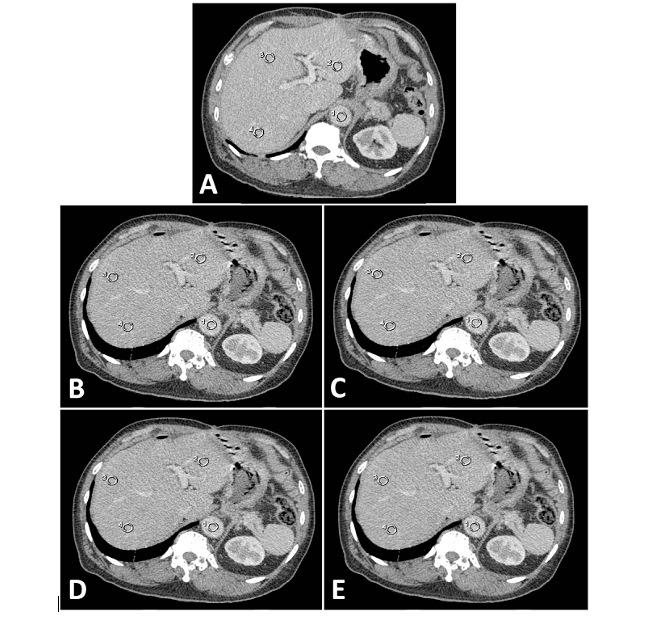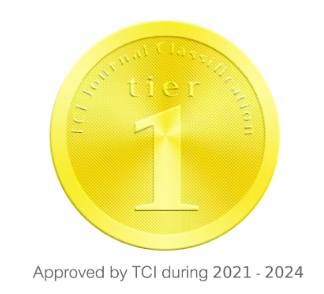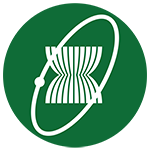Abdominal CT radiation dose reduction at Siriraj Hospital (Phase II)
DOI:
https://doi.org/10.46475/aseanjr.v21i3.81Keywords:
Abdominal computed tomography, Abdominal CT, Automatic tube current modulation, ATCM, Radiation dose reduction, Iterative reconstruction, IR, Adaptive Statistical Iterative Reconstruction, ASiRAbstract
Objective: To compare radiation dose, radiologists’ satisfaction, and image noise between the standard dose abdominal CT currently performed at our hospital and the new automatic tube current modulation (ATCM) low dose abdominal CT, using various parameters (0%, 10%, 20%, and 30%) of the Adaptive Statistical Iterative Reconstruction (ASiR).
Materials and Methods: We prospectively performed the ATCM low dose abdominal CT in 111 participants who had prior standard dose CT for comparison. The ATCM low dose CT images were post processed with 4 parameters (0%, 10%, 20% and 30%) of ASiR on a CT workstation. The volume CT dose index (CTDIvol) of the ATCM low dose and the standard dose CT were compared. Four experienced abdominal radiologists independently assessed the quality of the ATCM low dose CT with the aforementioned ASiR parameters using a 5-point-scale satisfaction score (1 = unacceptable, 2 = poor, 3 = average, 4 = good, and 5 = excellent image quality) by using the prior standard dose CT as a reference of an excellent image quality (5). Each reader selected the preferred ASiR parameter for each participant. The image noise of the liver and the aorta in all 5 techniques (1 prior standard dose and 4 current ATCM low dose techniques) was measured. The correlation between the image quality vs the participants’ body mass index (BMI) and waist circumferences were analyzed.
Results: The mean CTDIvol of the ATCM low dose CT was significantly lower than of the standard dose CT (7.29 ± 0.20 vs 11.28 ± 0.23 mGy, p<0.001). The mean satisfaction score for the ATCM low dose CT with 0%, 10%, 20% and 30% ASiR were 4.14, 4.16, 4.17, and 4.26, respectively with the ranges of 3 to 5 in all techniques. The preferred ASiR parameters of each participant randomly selected by each reader were varied, depending on the readers’ opinions. The mean image noise of the aorta on the standard dose CT and the ATCM low dose CT with 0%, 10%, 20%, and 30% ASiR was 30.69, 36.60, 34.05, 31.43, and 29.09, respectively, while the mean image noise of the liver was 24.96, 29.90, 27.86, 25.66, and 23.68, respectively. There was a correlation between the image quality (satisfaction score and image noise) vs the participants’ BMI and waist circumferences.
Conclusion: The ATCM low dose CT received acceptable radiologists’ satisfaction with significant radiation dose reduction. The increment of ASiR was helpful in reducing the image noise and had a tendency to increase the radiologists’ satisfaction score.
Downloads
Metrics
References
Hall EJ, Brenner DJ. Cancer risks from diagnostic radiology: the impact of new epidemiological data. Br J Radiol 2012;85:e1316-7. doi: 10.1259/bjr/13739950.
Hara AK, Wellnitz CV, Paden RG, Pavlicek W, Sahani DV. Reducing body CT radiation dose: beyond just changing the numbers. AJR Am J Roentgenol 2013;201:33-40. doi: 10.2214/AJR.13.10556.
Tamm EP, Rong XJ, Cody DD, Ernst RD, Fitzgerald NE, Kundra V. Quality initiatives: CT radiation dose reduction: how to implement change without sacrificing diagnostic quality. Radiographic 2011;31:1823-32. doi: 10.1148/rg.317115027.
Kalra MK, Maher MM, Toth TL, Schmidt B, Westerman BL, Morgan HT, et al. Techniques and applications of automatic tube current modulation for CT. Radiology 2004;233:649-57. doi: 10.1148/radiol.2333031150.
Kalra MK, Maher MM, Toth TL, Kamath RS, Halpern EF, Saini S. Comparison of Z-axis automatic tube current modulation technique with fixed tube current CT scanning of abdomen and pelvis. Radiology 2004;232:347-53. doi: 10.1148/radiol.2322031304.
Lee S, Yoon SW, Yoo SM, Ji YG, Kim KA, Kim SH, et al. Comparison of image quality and radiation dose between combined automatic tube current modulation and fixed tube current technique in CT of abdomen and pelvis. Acta Radiol 2011;52:1101-6. doi: 10.1258/ar.2011.100295.
Patino M, Fuentes JM, Singh S, Hahn PF, Sahani DV. Iterative reconstruction techniques in abdominopelvic CT: Technical concepts and clinical implementation. AJR Am J Roentgenol 2015;205:W19-31. doi: 10.2214/AJR.14.13402.
Willemink MJ, de Jong PA, Leiner T, de Heer LM, Nievelstein RA, Budde RP, et al. Iterative reconstruction techniques for computed tomography Part 1: technical principles. Eur Radiol 2013;23:1623-31. doi: 10.1007/s00330-012-2765-y.
Geyer LL, Schoepf UJ, Meinel FG, Nance JW Jr, Bastarrika G, Leipsic JA, et al. State of the art: iterative CT reconstruction techniques. Radiology 2015;276:339-57. doi: 10.1148/radiol.2015132766.
Apisarnthanrak P, Buranont C, Boonma C, Janpanich S, Suwatananonthakij T, Klinhom A, et al. Abdominal CT radiation dose optimization at Siriraj Hospital. ASEAN J Radiol 2020;21:28-43.
Mitsumori LM, Shuman WP, Busey JM, Kolokythas O, Koprowicz KM. Adaptive statistical iterative reconstruction versus filtered back projection in the same patient: 64 channel liver CT image quality and patient radiation dose. Eur Radiol 2012;22:138-43. doi:10.1007/s00330-011-2186-3.
Prakash P, Kalra MK, Kambadakone AK, Pien H, Hsieh J, Blake MA, et al. Reducing abdominal CT radiation dose with adaptive statistical iterative reconstruction technique. Invest Radiol 2010;45:202-10. doi:10.1097/RLI.ob013e3181dzfeec.
Sagara Y, Hara AK, Pavlicek W, Silva AC, Paden RG, Wu Q. Abdominal CT: comparison of low-dose CT with adaptive statistical iterative reconstruction and routine-dose CT with filtered back projection in 53 patients. AJR Am J Roentgenol 2010;195:713-9. doi:10.2214/AJR.09.2989.
Willemink MJ, Takx RA, de Jong PA, Budde RP, Bleys RL, Das M, et al. Computed tomography radiation dose reduction: effect of different iterative reconstruction algorithms on image quality. J Comput Assist Tomogr 2014;38:815-23. doi:10.1097/RCT.0000000000000128.
Gervaise A, Osemont B, Louis M, Lecocq S, Teixeira P, Blum A. Standard dose versus low-dose abdominal and pelvic CT: comparison between filtered back projection versus adaptive iterative dose reduction 3D. Diagn Interv Imaging 2014;95:47-53. doi:10.1016/j.diii.2013.05.005.
Singh S, Kalra MK, Shenoy-Bhangle AS, Saini A, Gervais DA, Westra SJ, et al. Radiation dose reduction with hybrid iterative reconstruction for pediatric CT. Radiology 2012;263:537-46. doi:10.1148/radiol.12110268.
Shaqdan KW, Kambadakone AR, Hahn P, Sahani DV. Experience with iterative reconstruction techniques for abdominopelvic computed tomography in morbidly and super obese patients. J Comput Assist Tomogr 2018;42:124-32. doi:10.1097/RCT.0000000000000656.

Downloads
Published
How to Cite
Issue
Section
License
Copyright (c) 2020 The ASEAN Journal of Radiology

This work is licensed under a Creative Commons Attribution-NonCommercial-NoDerivatives 4.0 International License.
Disclosure Forms and Copyright Agreements
All authors listed on the manuscript must complete both the electronic copyright agreement. (in the case of acceptance)
















